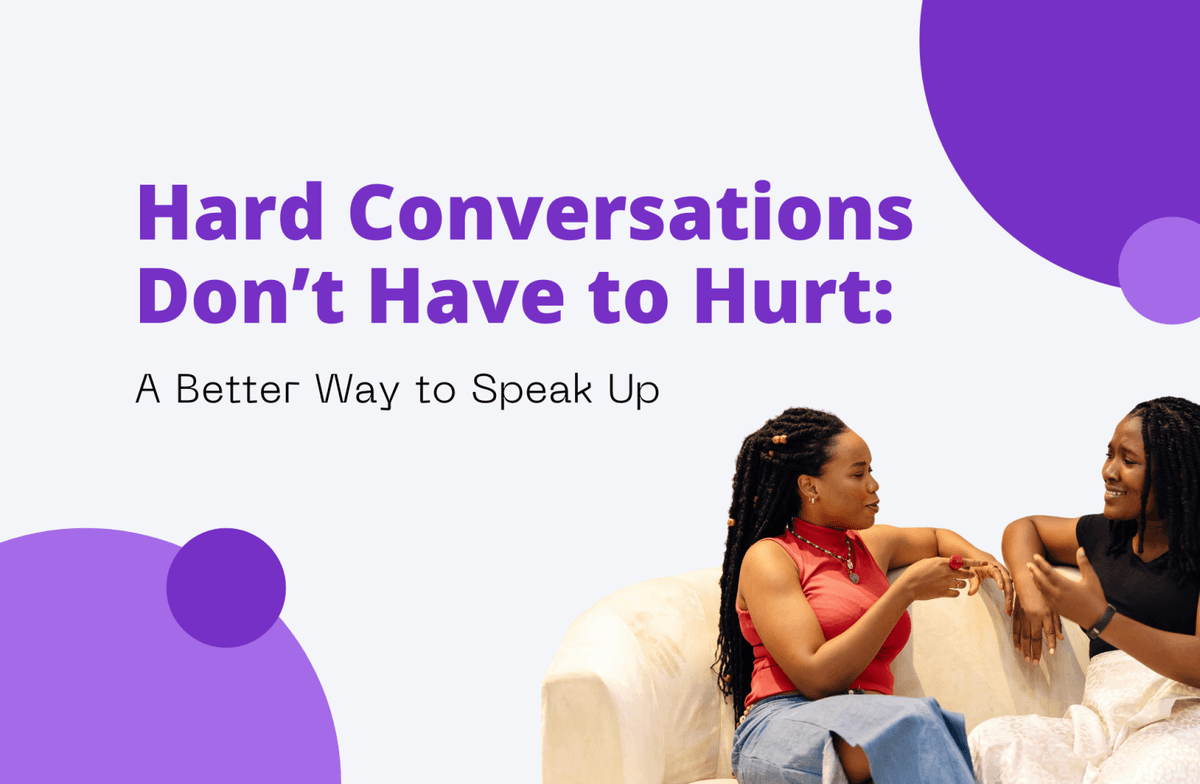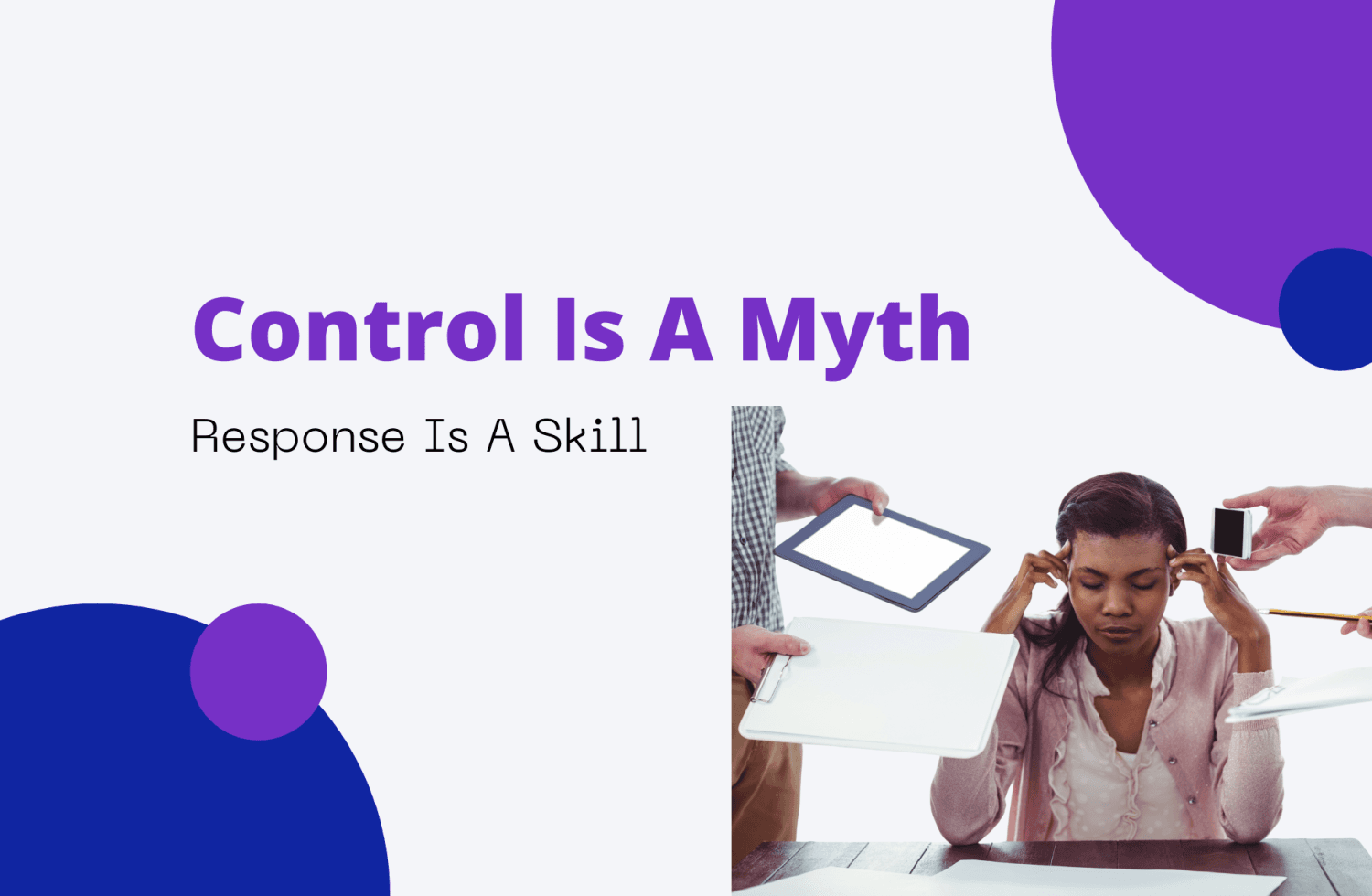Click Here to Download The PDF.
How to Handle Tough Conversations Without Guilt, Fear, or Blame
Let me be real with you.
Hard conversations are one of the most common ways people avoid real growth.
Whether it’s at work when deadlines slip, at home when someone feels ignored, or with friends when something unspoken keeps pulling you apart—these conversations tend to derail or never happen.
You either explode, saying things you regret—or you say nothing and let the tension build.
Both choices do damage, even if they feel safer in the moment.
But here’s what most people don’t know: you can say the hard thing—and do it in a way that doesn’t make things worse.
When you get it right, you don’t just fix a problem—you change how people show up afterward.
Why Most Conversations Go Wrong (And How to Finally Get Them Right)
A lot of us tiptoe around discomfort.
We think if we stay quiet, we keep peace.
Or we think if we say too much, we’ll burn bridges.
What usually happens is this:
- We hide what bothers us under politeness.
- Small hurts stack up until we can’t ignore them.
- When we finally bring something up, we either unload all at once or gaslight ourselves (“Maybe it’s just me”).
Those patterns are quietly destructive.
Silence breeds assumptions.
Frustration grows.
Relationships get brittle.
What we really need is a way to speak up that honors what’s true, softens the blow, and opens space for something better.
Not just for us—but for others.
The DIFFICULT Path: A Conversation Plan You Can Actually Use
When a moment feels weighted, things like tone, timing, curiosity matter more than the exact words.
The DIFFICULT plan gives you a guide—not a script, but a path you can follow.
Here’s a deeper look at each step, what to watch out for, and how it changes the shape of what’s possible:
- Decide why you’re talking
- Pause. Ask: am I bringing this up to show someone they were wrong, or am I bringing this up because something needs to shift—and I care enough to risk tension? Knowing that makes how you enter the conversation different.
- Invite them to share first
- When you say, “Can I hear your take first?” you’re doing something powerful: you’re showing that the other person matters. That you aren’t going in wanting to punish. You want to understand.
- Focus on facts
- Emotions are real. But when you build on what actually happened, it gives you common ground. Dates, events, what was promised vs. what was delivered. Facts help keep the conversation from sliding into blame-land.
- Feelings are valid
- After facts, it’s okay to say, “Here’s how this felt for me…” It turns the conversation from “You caused this” to “This is how it landed.” People might be more willing to lean in when they don’t feel attacked.
- Impact matters
- Your point in noticing the facts and feelings is to surface impact. What happened because something got missed? What got harder, what got delayed, what got hurt? Recognizing impact often opens a doorway to repair.
- Choose curiosity
- Instead of assuming you know what was going on for the other person, ask. “What was going on behind the scenes?” Curiosity disrupts blame. It opens up stories you didn’t see.
- Understand their view
- You don’t need to agree. But you need to hear. Sometimes just feeling heard shifts things. It softens defensiveness and makes the next part possible.
- Look for a path forward
- The point is not to win. The point is to solve. Ask: “What do you think would make this better going forward?” What steps are realistic? What small change alleviates the pain or the barrier?
- Talk again later if needed
- Even with all that, not everything resolves in one go. Sometimes the biggest thing is giving space—for processing, for cooling down, for coming back with new insight.
A Real Workplace Story: Clarity Turned Everything Around
Here’s one of the times using these ideas made a difference—not perfectly, but enough that things started shifting in real, visible ways.
I was consulting with a team split between product and marketing.
Product felt like marketing kept rushing launches before readiness, and marketing felt like product wasn’t giving clear timelines or updates.
Deadlines slipped.
Releases were patchy.
Nobody was happy—but no one was brave enough to call it out directly.
Meetings were long but empty.
People nodded but left frustrated.
Slack threads turned into workarounds.
One engineer said to me later, “I dread the product kickoff call these days—because I know I’ll have to tell people what didn’t get done, and I don’t want to sound like I’m making excuses.”
That heaviness was everywhere.
The weight of things unsaid made every new problem feel bigger.
We agreed to try something different using the DIFFICULT path.
- We started by each person stating what they saw clearly—no criticism, just observations.
- Then each person said how those observations impacted their work and their feeling of ownership.
- One marketer said, “When features aren’t finalized by the launch date I told clients about, I feel distrust creeping in—my credibility drops.”
- An engineer said, “When I’m asked for updates but I don’t get complete feedback, I feel like I'm misjudged.”
With those statements out, the tone changed.
People weren’t blaming.
They were naming what was real.
Then we created a shared launch plan.
Marketing would send a draft timeline.
Product would mark what was ready and what needed buffer.
We committed to weekly check-ins—short ones where we flagged issues early.
Over the next month, fewer surprises.
More respect for each other’s roles.
More trust that if something wasn’t ready, it would surface early—not get hidden until release day.
What to Say Instead (When You're Stuck in the Moment)
Hard moments freeze us.
We either go defensive or vague.
But having just a few alternate ways to phrase things can change everything—how we move forward, how others hear us.
Here are some ideas:
- Instead of “They messed up,” try saying, “Here’s what I noticed.” That moves away from blame and toward clarity.
- Instead of “Why did this happen?” try, “What was going on for you when this happened?” That shows curiosity and gives space for truth.
- Instead of “Everything’s fine,” try, “This feels off to me.” It opens honesty without accusation.
- Instead of “Maybe it’ll pass,” try, “Let’s talk about this.” It invites the issue into daylight instead of pushing it down.
- Instead of “I need to win,” try, “Help me see your side.” You shift from contest to connection.
Before You Speak: Ground the Mood
How you start sets the tone.
These openers are ways to ease in—not skirting the issue, but not erupting either.
- Ask, “Is now a good time to talk about something I’ve been thinking about?”
- Say, “I want to bring this up so things feel better for both of us.”
- Try, “I might be missing something—can you help me understand what you saw?”
- Or simply, “Thanks for being open with me; I know this can be uncomfortable.”
- You might even begin with, “How are you feeling about this right now?”
When you begin with humility, respect, and curiosity, you give the conversation a chance to build trust instead of walls.
Best Resources to Go Deeper
If you want to keep building this ability—not just survive a single conversation but get more skilled and more comfortable—these are two of the strongest, most real resources out there right now.
Podcast
“Sheila Heen: Decoding Difficult Conversations” on The Knowledge Project Podcast, Episode #57. Sheila Heen is co-author of Difficult Conversations and she breaks down the three layers that make up every hard talk, what people really avoid, and what you can do to move through fear and defensiveness.
Documentary / Long‑Format Video
“Managing Differences: Communication and Conflict in Couples and Families – Part 1” by Professor Benjamin Karney. This lecture/documentary‑style video explores how personal histories, assumptions, and unspoken expectations change how we see conflict. It’s not glossy—it’s raw, deep, and full of insight.
Let What You Say Be the Difference
At the end of the day, the hardest thing isn’t the conversation itself.
It’s what you carry after you’ve said—or didn’t say—the thing that mattered.
When you start practicing speaking what needs saying with clarity, courage, and kindness, you make a choice: to live lighter.
To let less unsaid tension accumulate.
To show up in relationships, work, and your life more honestly.
Doing this well is a gift—not just for you, but for everyone you work with, live with, care about.
Clarity is not easy.
Being kind while being clear is harder still.
But that tension—that space between what’s true and what’s safe—that’s where meaning lives.
Speaking the hard thing isn’t about winning.
It’s about turning unease into connection.
Turning fear into respect.
Turning silence into something that doesn’t hurt.
Because when you learn to say what matters, you change not just moments—but what comes after them.
Download the Infographic
Want to keep this conversation map nearby?
You can download the full Tough Conversations infographic as a printable PDF—perfect to use before meetings, team check‑ins, or anytime you need a reset.
Click here to download the PDF
Keep it where you can see it.
Because knowing what to say, and how to say it, changes everything.
-
Justin




